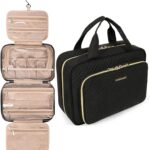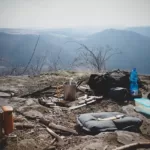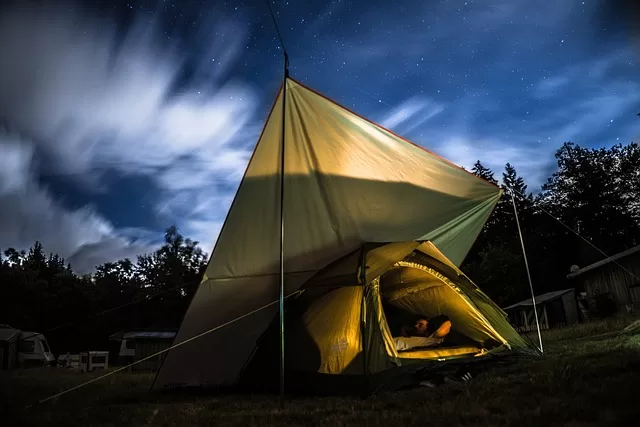As an avid camper, I know how important it is to have well-organized and properly stored camping gear. Early on in my camping adventures, I learned the hard way that disorganized gear can lead to a stressful and frustrating trip. I remember one particular trip where I couldn’t find my tent poles and spent hours searching through my chaotic pile of gear.
After that experience, I made a conscious effort to develop a system for storing and organizing my camping gear. Now, before and after each trip, I take the time to clean and dry my gear, and then I store everything in labeled plastic bins. I have separate bins for my cooking equipment, sleeping gear, and miscellaneous items like flashlights and bug spray.
This system has made packing for camping trips a breeze, and I no longer have to spend hours digging through piles of gear to find what I need. I figured that if you must fully enjoy all the available thrilling things to do while camping then properly storing and organizing your camping gear, is essential to focus on enjoying the great outdoors and creating unforgettable memories.
With this discovery, I have decided to share my tips for storing and organizing your camping gear to help you have a successful and stress-free camping trip. Without a system in place, you might find yourself stressed and frustrated while searching for essential items like your tent or sleeping bag. On the other hand, a well-organized gear setup can lead to a successful and stress-free camping experience.
Preparing Your Gear for Storage
Preparing your gear for storage is an essential task to ensure the longevity and functionality of your equipment. Whether it’s camping gear, sports equipment, or tools, properly storing your gear can prevent damage from moisture, pests, and other environmental factors. By taking a few simple steps, like cleaning and drying your gear as well as inspecting it after each cleaning and use, you can help protect your investment and be ready for your next adventure or project. Failing to clean and dry your gear before storage can lead to mold, mildew, and other issues that can render your gear unusable.
Importance of Proper Cleaning and Drying
- Cleaning your gear after each camping trip ensures that it remains in good condition and extends its lifespan.
- Additionally, drying your gear properly helps prevent the growth of mold, which can be a health hazard and make your gear smell musty.
Techniques for Cleaning and Drying Gear
- For tents and tarps, wipe down the surface with a damp cloth and mild soap. Avoid using harsh chemicals, as they can damage the fabric. Hang the tent or tarp out to dry in a well-ventilated area or use a fan to speed up the process.
- For sleeping bags and clothing, follow the manufacturer’s instructions for washing and drying. Generally, it’s best to wash them in a front-loading washing machine with a gentle detergent and dry them on low heat or hang them out to air dry.
- For cooking equipment and other gear, wipe down the surfaces with a damp cloth and mild soap. If the gear is dishwasher safe, you can run it through a cycle in the dishwasher.
Inspecting Your Gear
- After cleaning and drying your gear, inspect it for any signs of damage or wear.
- Check for Damages and Wear: For tents, tarps, and sleeping bags, look for rips, tears, or holes. If you find any, patch them up using a repair kit or take the gear to a professional to fix. For cooking equipment, check for cracks or dents that can compromise its functionality. Inspect utensils and other small gear for rust, which can be a sign of moisture damage.
- Replace or Repair as Needed: If you find any damages that can’t be repaired, it’s best to replace the gear before your next camping trip. This ensures that you have reliable gear and can prevent any potential accidents or issues.
Storing Your Camping Gear
Storing your camping gear properly is essential to ensure that it remains in good condition and is ready for your next outdoor adventure. Whether you’re a seasoned camper or a first-timer, taking the time to store your gear correctly can save you money and hassle in the long run. Proper storage can help prevent damage from moisture, pests, and other environmental factors. With a few simple steps like creating an inventory, and storing it in cool and dry places or durable containers, you can make sure your camping gear is ready to use whenever you are.
Creating a Gear Inventory
Before you start storing your camping gear, it’s important to create a gear inventory. This helps you keep track of all your gear, ensures that you have everything you need for your next trip, and helps you maintain the condition of your gear. Some of the ways to create an inventory include:
- Listing the Essential Gear
Make a list of all the essential gear you need for camping, including your tent, sleeping bag, cooking equipment, and other miscellaneous items like flashlights and bug spray.
- Keeping a Record of Gear Condition: As you create an inventory of your gear, take note of its condition. This helps you identify any damages or wear that may need to be repaired before your next camping trip.
Storing Gear in Dry and Cool Conditions
Proper storage conditions are essential to maintaining the quality of your camping gear. You’ll want to avoid moisture and direct sunlight, and ensure that your gear stays ventilated. Here are some of the ways for storing and organizing your gear in a cool and dry condition:
- Avoiding Moisture and Direct Sunlight: Moisture can lead to mold and mildew, which can damage your gear. Direct sunlight can cause colors to fade and weaken the fabric. It’s best to store your gear in a dry and cool location, away from sunlight.
- Keeping Gear Ventilated: Make sure your gear is properly ventilated by using breathable containers or leaving them in a well-ventilated space. This helps prevent moisture buildup and ensures that your gear stays fresh.
Storing Gear in Clear and Durable Containers
The right containers can make a big difference in storing and organization of your camping gear. Especially when camping in the rain or any other time. Here are some of the tips for storing and organizing your camping gear in clear durable containers for a stress-free trip:
- Choose the Right Containers: Clear plastic bins are great for storing camping gear, as they allow you to easily see what’s inside. You’ll want to choose durable containers that can withstand the weight and shape of your gear, and that is waterproof to prevent moisture buildup.
- Label the Storing Containers: Once you have your containers, label them according to the type of gear you’re storing inside. For example, you could label one bin “Cooking Equipment” and another “Sleeping Gear.” This makes it easy to find what you need when you’re packing for your next camping trip.
Organizing Your Camping Gear for a Trip
Organizing your camping gear before a trip can make your outdoor adventure more enjoyable and stress-free. By taking the time to plan and pack your gear in an organized way, you can easily find what you need when you need it, and avoid overpacking or leaving essential items behind. Whether you’re camping for a weekend or embarking on a longer trip, a proper organization can help you make the most of your time in nature. With a few of these simple tips and tricks, you can pack efficiently and stay organized throughout your trip.
Grouping Similar Gear Together
When you’re organizing your camping gear for a trip, it’s important to group similar gear together. This makes it easier to pack and find what you need during your trip. You’ll want to separate your clothing, cooking, and shelter gear.
Separating Clothing, Cooking, and Shelter Gear
Keeping your clothing gear separate from your cooking gear and shelter gear helps you stay organized during your trip. You can store your clothing in a separate bag or container, and keep your cooking and shelter gear together for easy access.
Keeping Gear Accessible and Easily Identifiable
To make it easy to find what you need during your trip, keep your gear accessible and easily identifiable. Use clear plastic containers or packing cubes to keep your gear organized and visible. Label your containers with the type of gear that’s inside to quickly locate items.
Packing Gear in a Logical and Efficient Manner
Packing and organizing your camping gear in a logical and efficient manner helps you maximize space and minimize weight. You’ll want to prepare for quick and easy access to your gear.
Maximizing Space and Minimizing Weight
When packing your gear, make use of every inch of space in your backpack or car. Use compression bags to reduce the size of your clothing items, and store your cooking and shelter gear in collapsible containers to save space. You can also use lightweight gear to minimize weight.
Preparing for Quick and Easy Access
You’ll want to prepare for quick and easy access to your gear during your trip. Pack the items you’ll need first at the top or in an easily accessible location in your backpack or car. This includes items like your tent, sleeping bag, and cooking equipment. Pack your clothing and other items you won’t need right away at the bottom.
Packing Your Gear for the Trip
Packing your gear for a trip is an important task that can greatly impact your travel experience. Whether you’re going on a camping trip, a hiking adventure, or a beach vacation, packing the right gear can make all the difference. It’s important to carefully consider what you’ll need for your trip and pack efficiently to avoid overpacking or forgetting essential items. Determine which of the camping backpacks and bags to use and follow some travel packing tips to efficiently achieve this. With a little planning and organization, you can ensure that you have everything you need for a successful and enjoyable trip.
Packing Your Gear in a Durable and Waterproof Backpack or Duffel
When packing your camping gear for a trip, it’s important to choose the right backpack or duffel that is durable and waterproof. You’ll also want to pack your gear safely and securely to ensure it arrives at your destination in good condition.
Choosing the Right Backpack or Duffel
- When selecting a backpack or duffel for your camping trip, consider the size and weight of your gear.
- Look for a backpack or duffel that is large enough to hold all your gear, but not so large that it is difficult to carry.
- It should also be durable and waterproof to protect your gear from the elements.
Packing Gear Safely and Securely
- To pack your gear safely and securely, use packing cubes or compression bags to organize your clothing and other items. This makes it easier to find what you need and prevents items from shifting during transport.
- Place heavier items at the bottom of the backpack or duffel, and use a waterproof liner or cover to protect your gear from moisture.
Transporting Your Gear Safely and Efficiently
Transporting your gear safely and efficiently involves loading and securing gear in the vehicle, and preparing for hiking and carrying gear.
Loading and Securing Gear in the Vehicle
- When loading your gear into the vehicle, place heavier items on the bottom and lighter items on top.
- Use tie-downs or bungee cords to secure gear and prevent it from shifting during transport.
- You can also use a roof rack or cargo carrier to transport larger items like a tent or cooler.
Preparing for Hiking and Carrying Your Gear
- If you plan on hiking or carrying your gear to your campsite, it’s important to pack your backpack or duffel with weight distribution in mind.
- Place heavier items like your tent and cooking equipment close to your back, and lighter items like clothing and snacks towards the top.
- Adjust the straps to fit comfortably and distribute the weight evenly.
- By packing your camping gear in a durable and waterproof backpack or duffel, and transporting it safely and efficiently, you can ensure a successful and stress-free camping trip.
Conclusion
Storing and organizing your camping gear like camping sleeping bags and pads, camping tents and shelters, and even your camping stove and cooking gear is essential if you are looking to enjoy a successful trip. Following these techniques for cleaning, inspecting, and storing your gear, outlined here can ensure it remains in good condition and is easily accessible when you need it. Be sure to group similar gear together, pack in a logical and efficient manner, and transport safely and efficiently to avoid feeling confused and easily exhausted whenever you need to use any of your camping gear and equipment.
A successful and stress-free camping trip begins with the proper preparation and organization of your gear. Don’t wait only until you want to go on that fishing trip before you get your camping fishing gear and tackle checked and organized, always ensure that your gear is properly stored and organized after each trip and before the next, by following these tips outlined here. By creating a gear inventory, packing your gear in durable and waterproof containers, and transporting it safely and efficiently, you can have all the gear you need for an enjoyable outdoor adventure.
In conclusion, prioritize your gear storage and organization to avoid a lot of disappointment and running around. With the right planning and attention to detail, you can ensure that your gear is well-maintained, easy to access, and ready to use for your next outdoor adventure. So, get started on storing and organizing your camping gear today not when you want to go on the trip alone; of course, this is if you must enjoy a hassle-free and memorable camping trip.



























